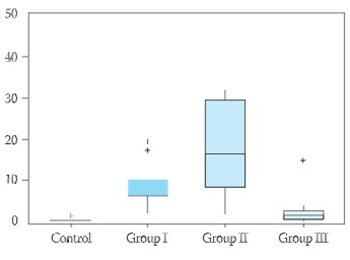Comparison of Creatine Kinase Activity and Myoglobin Blood Level in Acute Myocardial Infarction Patients
DOI:
https://doi.org/10.17305/bjbms.2006.3204Keywords:
myoglobin, creatine kinase, acute myocardial infarctionAbstract
The aim of this prospective study was to evaluate and compare the relative increase of serum myoglobin level and total creatine kinase(CK) activity in acute myocardial infarction (AMI) patients (n=36). We measured serial changes in total CK activity and myoglobin serum level in three-time periods (6-9 hours, 24 hours and 6-7 days) from chest pains onset. Myoglobin peaked during the first 6-9 hours but total CK reached its peak activity after 24 hours from AMI symptoms onset. Results of this study showed that as non-specific cardiac marker myoglobin had better sensitivity and earlier rise in serum than total CK activity in AMI patients. Rapid kinetic of myoglobin level is important for its utility as marker for re-infarction diagnosis. Early myoglobin increase in serum is important for early triage of AMI patients and early "ruling out" of AMI diagnosis if there is no evidence of its elevation in circulation.
Citations
Downloads

Downloads
Published
How to Cite
Accepted 2018-02-18
Published 2008-02-20









